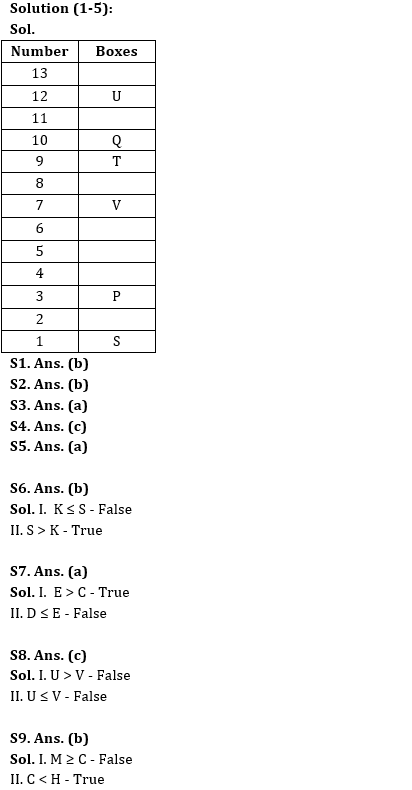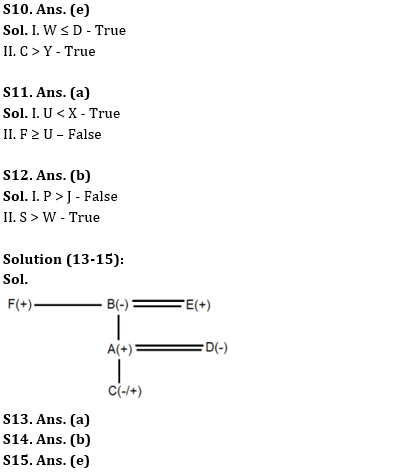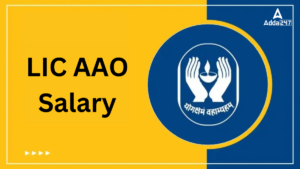Directions (1-5): Answer the questions based on the information given below.
A certain number of boxes are stacked one above another such that the bottommost box is numbered as 1 and the box above it is 2 and so on. V is placed 4th to the above of P which is a prime numbered box. One box is placed between P and S. Number of boxes placed above V is one more than the number of boxes between V and S. T is placed 2nd to the above of V. U is placed 2nd from the top. Number of boxes between U and T is equal to the number of boxes below P.
Reasoning Quiz For IBPS RRB PO Clerk Prelims 2022 15th July IN HINDI
Q1. How many boxes are there in the stack?
(a) 11
(b) 13
(c) 10
(d) 12
(e) None of these
Q2. How many boxes are placed below P?
(a) 1
(b) 2
(c) 4
(d) 6
(e) None of these
Q3. Which of the following box is the 7th numbered box?
(a) V
(b) T
(c) S
(d) Either V or T
(e) None of the above
Q4. If a box Q is placed just above T, then how many boxes are placed between Q and U?
(a) Two
(b) Four
(c) One
(d) Three
(e) None of the above
Q5. How many boxes are placed between S and T?
(a) 7
(b) 5
(c) 3
(d) 4
(e) None of the above
Directions (6-8): In the following questions assuming the given statement to be true, find which of the conclusion(s) among given conclusions is/are definitely true and then give your answers accordingly.
Q6. Statements: L > N ≥ K< P, O > S, S > R ≥ L
Conclusions:
I. K ≤ S
II. S > K
(a) Only I is true
(b) Only II is true
(c) Either I or II is true
(d) Neither I nor II is true
(e) Both I and II are true
Q7. Statements: A > B ≥ M< D, E> Q, Q > C ≥ D
Conclusions:
I. E > C
II. D ≤ E
(a) Only I is true
(b) Only II is true
(c) Either I or II is true
(d) Neither I nor II is true
(e) Both I and II are true
Q8. Statements: S > U ≥ M< P, O > Q, Q > V ≥ P
Conclusions:
I. U > V
II. U ≤ V
(a) Only I is true
(b) Only II is true
(c) Either I or II is true
(d) Neither I nor II is true
(e) Both I and II are true
Directions (9-12): In the following questions assuming the given statement to be true, find which of the conclusion(s) among given conclusions is/are definitely true and then give your answers accordingly.
Q9. Statements: M ≥ N = H; N > J ≥ C
Conclusions:
I. M ≥ C
II. C < H
(a) Only I is true
(b) Only II is true
(c) Either I or II is true
(d) Neither I nor II is true
(e) Both I and II are true
Q10. Statements: Y < D = C ≥ S ≥ W > U = V
Conclusions:
I. W ≤ D
II. C > Y
(a) Only I is true
(b) Only II is true
(c) Either I or II is true
(d) Neither I nor II is true
(e) Both I and II are true
Q11. Statements: Z ≤ C < X; Z ≥ U; X ≤ F
Conclusions:
I. U < X
II. F ≥ U
(a) Only I is true
(b) Only II is true
(c) Either I or II is true
(d) Neither I nor II is true
(e) Both I and II are true
Q12. Statements: P > W ≤ U = J, T < S ≥ P < J
Conclusions:
I. P > J
II. S > W
(a) Only I is true
(b) Only II is true
(c) Either I or II is true
(d) Neither I nor II is true
(e) Both I and II are true
Directions (13-15): Answer the questions based on the information given below.
There are six members A, B, C, D, E and F in the family of three generations. There is no single parent in the family. B is mother-in-law of D. A is father of C. F is brother-in-law of E. F is the maternal uncle of A.
Q13. Who is the husband of B?
(a) E
(b) A
(c) D
(d) C
(e) F
Q14. How is D related to C?
(a) Sister
(b) Mother
(c) Father
(d) Brother
(e) Sister-in-law
Q15. How many females member are there in the family?
(a) Two
(b) Three
(c) Four
(d) More than four
(e) Can’t be determined
Solutions







 GA Capsule for SBI Clerk Mains 2025, Dow...
GA Capsule for SBI Clerk Mains 2025, Dow...
 The Hindu Review October 2022: Download ...
The Hindu Review October 2022: Download ...
 LIC AAO Salary 2025, Revised Structure, ...
LIC AAO Salary 2025, Revised Structure, ...





